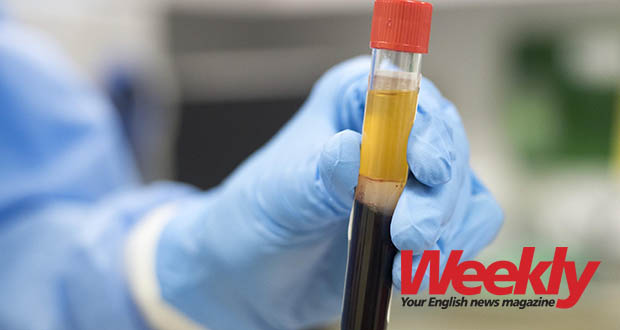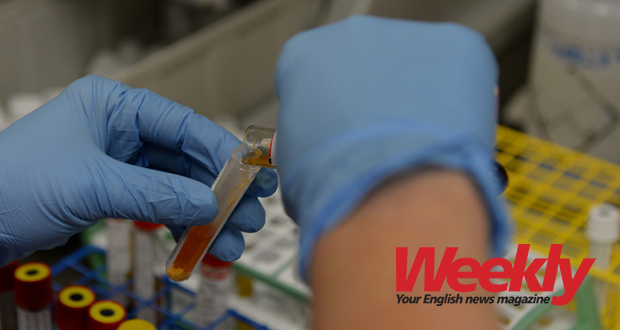Publicité
Plasma therapy and Covid-19: great experiment
Par
Partager cet article
Plasma therapy and Covid-19: great experiment

With a vaccine for Covid-19 at least a year away, Mauritius has announced that it is starting plasma therapy to treat serious cases of the virus. Mauritius joins the growing number of countries opting for plasma therapy as a stopgap until a definitive vaccine or treatment is developed. So what is plasma therapy and what is the evidence that it works against Covid-19?
On 8 March, the prime minister, Pravind Jugnauth, announced that Mauritius has begun treating serious cases of Covid-19 languishing in intensive care wards with serum plasma therapy. With no definitive treatment for Covid-19 greenlighted by the World Health Organization (WHO) yet and with experts expecting a vaccine for Covid-19 to take at least a year to develop, Mauritius and other countries are turning to serum plasma therapy in an effort to stem the virus until then.
What does plasma therapy entail? Medically, it rests on the concept of ‘passive immunity’, meaning that those who recover from an infection develop antibodies that circulate in their bloodstream killing the virus, or what remains of it in the body. What plasma therapy does is take the plasma – the leftover, clear liquid that’s left after red blood cells are removed – from someone who recently recovered from Covid-19 and give it in the form of an infusion into the bloodstream of a person still suffering from the virus, in the hope that it will give the immune system a boost and increase the body’s disease-fighting response.

“At the end of the treatment, out of the 10 who were on plasma treatment, all no longer needed ventilators with three being discharged from hospital and the remaining seven, though still in hospital, improved considerably.”
According to Dr Cassam Hingun, “There is a lot of experience with using plasma therapy within the medical field.” In a way, this is actually dusting off an old weapon. Despite the complexity of the procedure, plasma therapy has actually been used for more than a century now. Before the development of vaccines and anti-microbial drugs, plasma therapy was used to treat diphtheria in the 1890s – saving an estimated 45,000 lives – the Spanish flu epidemic in 1918, as well as measles and mumps. Plasma therapy fell out of fashion with the development of effective vaccines and antibiotics. However, as newer viruses emerged in recent years, the medical establishment globally began taking another look at plasma therapy. In 2011, a study by a group of Chinese academics was published in the Clinical Infectious Diseases journal, that tested the effectiveness of plasma therapy in combating the H1N1 outbreak that raged between September 2009 and June 2010. Plasma therapy was given to a group of 20 patients and what the study found was that 20 per cent of those on plasma treatment died from H1N1, compared to 54.8 per cent of those who did not get the treatment. Even earlier, the European Journal of Clinical Microbiology and Infectious Diseases published a study in 2004 that looked at the effect of plasma therapy on SARS patients. Between 20 and 26 March, 80 SARS patients in Hong Kong were put on plasma therapy and it turned out that they had a higher rate of being discharged from hospital within 22 days (58.3 per cent) than those who were not on plasma therapy (15.6 per cent). And the Mauritius medical establishment has the facilities to deal with the therapy. According to Dr. Hingun, “Mauritius has a blood bank where they are always working on procedures like separating plasma from red blood cells and isolating white blood cells routinely, particularly to deal with urgent cases or patients recovering from surgery, for example.” He adds, “It’s not technically very complicated and the Mauritian health system has the capacity to supply plasma.”
So, it should come as no surprise then that in the event of an even bigger outbreak and no vaccine yet available, plasma therapy is picking up in popularity once again. The groundwork of looking at plasma therapy was laid by health authorities in China when it was in the grip of the Covid-19 epidemic. On 28 March’, the Clinical Infectious Diseases journal published a study by Chinese medical researchers that studied blood samples from 173 Covid-19 patients at a hospital in Shenzhen between 11 January and 9 February. What they found was that the body produced antibodies to fight the virus at varying levels throughout the course of the disease. In the first seven days, antibody production ramped up, peaking at 66.7 per cent by day seven of an infection and then declined to 45.5 per cent until day 36 of an infection. Although it is still not known how long the antibodies remain in the body, what is clear is that they are present during and just after an infection, opening up the possibility of plasma therapy by using the blood of those just recovered. If the antibodies are being produced, they can be used. The Journal of the American Medical Association also produced the findings of another much smaller study where five critically ill Covid patients – aged between 39 and 62 years old – were actually put on plasma therapy once again in Shenzhen between 20 January and 25 March. The health authorities reported that all five patients rapidly improved after being put on plasma therapy – three of them discharged within 55 days – and the remaining two going from critical to stable status. Another parallel study took place between 23 January and 19 February when 10 patients in critical condition and on ventilators in three hospitals in the Chinese city of Wuhan – where the pandemic was initially concentrated – were given plasma treatment. What was found was that at the end of the treatment, out of the 10 who were on plasma treatment, all no longer needed ventilators with three being discharged from hospital and the remaining seven, though still in hospital, improved considerably. That was compared to a random selection of another 10 patients who were not on plasma therapy out of whom three died, six were stable and only one improved.
With this evidence coming out of China, other countries have also turned to experimenting with plasma treatment when dealing with Covid-19. On March 28, the US cities of New York and Houston began offering plasma treatment while its Food and Drug Administration authorised the use of the treatment and blood institutes announced that they would start collecting plasma from recently-recovered patients. The Indian state of Kerala too announced that it would start clinical trials of the treatment as did the Canadian Blood Services. And with 19 patients recovered from Covid-19 – with their antibodies in the blood ‒ at the time of the announcement ‒ and 42 total recovered patients by Monday, Mauritius is too. Zouberr Joomaye, the government spokesman, appealed to recovered patients to make their plasma available to the health authorities. On Sunday, the government announced that it had started by putting two patients on plasma therapy. “It’s definitely worth trying,” says Dr Hingun. “Personally, if, God forbid, I had Covid, I would opt for plasma therapy too until a vaccine is developed.”
As more countries around the world start the experiment with plasma, on a much-larger scale than initially tested out in China, the real effectiveness of plasma treatment will be discovered.
New!
With https://kiosk.lasentinelle.mu/ and the Kiosk LSL app, stay up-to-date from home with just one click. Find Weekly, l’express and all your favourite newspapers and magazines as well as publications from the Indian Ocean, France and Africa on the same digital platform.
Publicité
Publicité
Les plus récents






